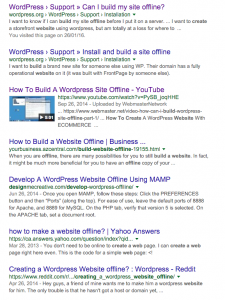The response I initially thought of for Lenora’s situation was to work with social media as a way to begin to develop a network of like-minded colleagues who could potentially share resources and tips about ways to address bullying in band (aka First Nation) schools in BC. A Facebook page or even a Twitter account could serve as an avenue to reach others in a quick, easy way that would not be dependent on uploading or downloading files with only dial-up access. Most band schools are small schools with few teachers. A networking option through social media site could help Lenora and teachers at her school connect with teachers at other and schools, and might even be useful for the public schools in nearby school districts. A blog might be another option, but this would depend on Lenora’s ease with using (or learning to use) one, as the case study indicates that time is a concern for her.
However, reading Keri’s post changed my mind. She suggested (and I paraphrase – hopefully correctly) that if Lenora could work with a group of other educators, they might be able to jointly develop a website. The collaborative effort could help with Lenore’s limited tech knowledge. Not only would the joint endeavour be valuable pro-d for the team in terms of learning more both about using technology and what might be important to help address bullying in their contexts; in addition, the final product might be richer, with more access points for other colleagues in other band schools. And as Keri notes, it also fits within a framework of the First Peoples’ Principles of Learning.
This of course, would still require some support in terms of one of the team having more access than Lenora to broadband for uploading/downloading (or the time to work at the school), and the potential for learning how to create a website. Even if a collaborative effort to create a website was not an option, the collaborative development of a social media linked community to address the bullying would be valuable.
On a completely different note (but related to the case study parameters) I want to share some thoughts about how challenging it can be for some educators to respond to situations/contexts that they do not understand are quite unlike their own. In the last few years, I have encountered many educators who presume that teaching experiences of educators around this province (and even country at times) are quite similar to their own experiences. I think this comes into play in the area of technology integration quite often. In other ETEC courses I can encountered people who actually disbelieve that some people in some remote First Nations communities for not have broadband. Yes, the tech infrastructure is growing rapidly, but if people don’t know about the jurisdictional challenges that exist when it comes to First Nations communities and First Nations (or band) schools, they don’t realize that services in some communities are not as readily available as people might think. In addition, most BC educators also do not realize that Band schools are not provincial schools and are not funded by the province (they are funded federally according to a completely different funding arrangement) and (except for a couple of schools) are not a part of a school district that can provide many of the supports that public school districts receive (i.e. in-person IT support). I think this is important to keep in mind when we respond to case studies (or potential future real world collaboration) about what people might need – it is important to find out more about the contexts other people are working/living in.
Okay – minor rant over now.
Oddly enough, I will be travelling to the Eliza Archie School in Canim Lake next month for the first time to facilitate a workshop (odd coincidence). I would be greatly surprised if any teachers there now are part of the very American- centered (i.e. not very relevant to BC First Nations) Cradleboard Teaching Project.
Jo
